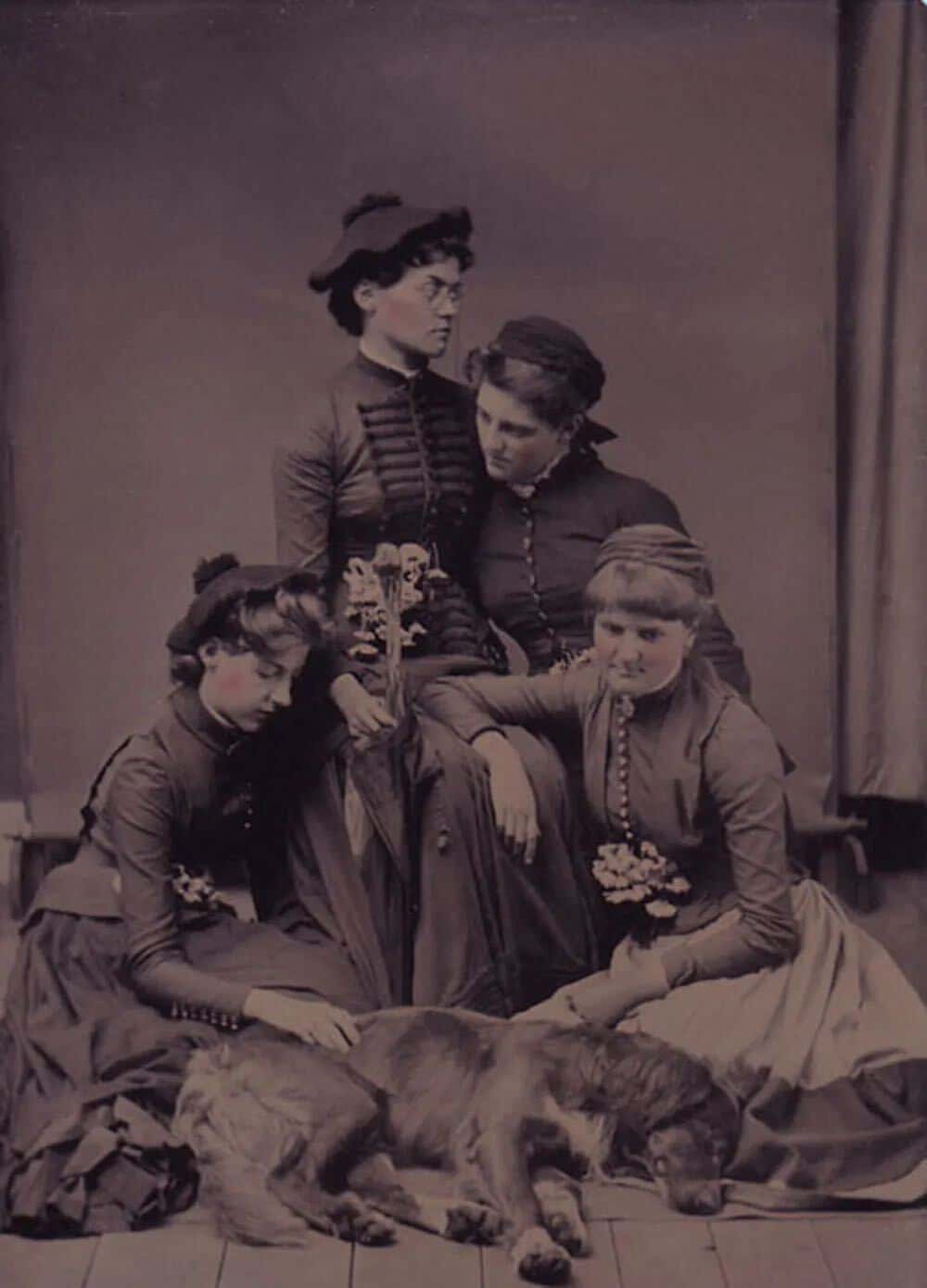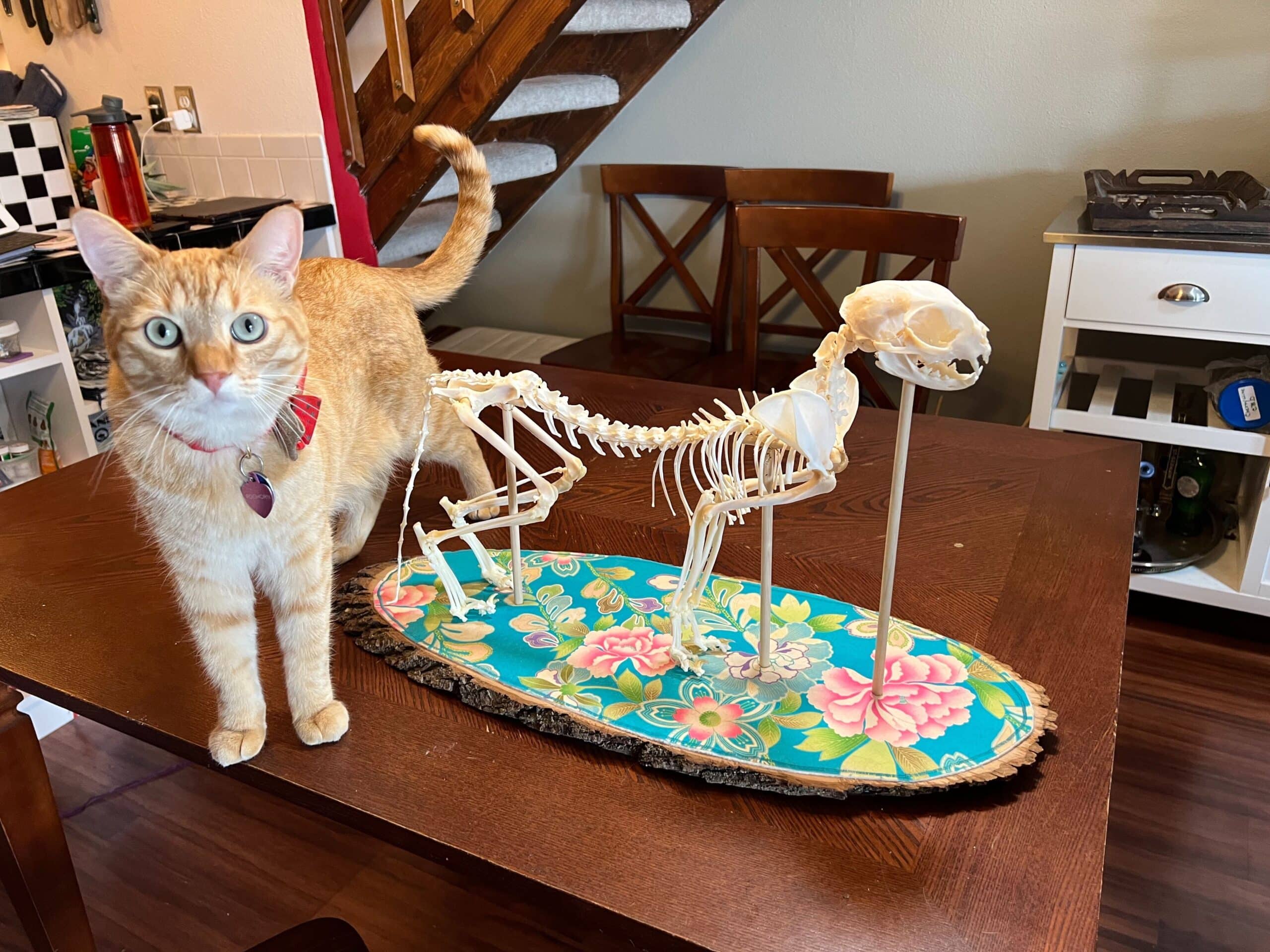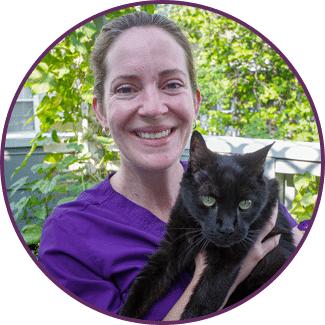I recently helped a cat named Rorschach in Fort Collins, CO make his peaceful transition. He was a beautiful black and white cat that had a heart-shaped spot on his right forearm. That spot was very special to his owner, Tiffany, who was saying goodbye that day. The family was going to handle their own aftercare and, once I had confirmed that Rorschach had passed, Tiffany’s boyfriend came into the bedroom to take Rorschach’s body. He checked in with Tiffany to confirm the plan they’d made earlier. “So I’ll take him to the taxidermist first, right?” he said. Tiffany suddenly seemed a little embarrassed, maybe because I was there and they hadn’t mentioned anything about taxidermy. “We have a friend who does taxidermy,” she said sheepishly “and he offered to preserve Rorschach’s heart paw for me. But who does that?” she said half to me and half to her boyfriend. “I mean, isn’t that creepy and weird? To have your dead cat’s arm?”
My heart swelled as I couldn’t think of a better keepsake for their unique loved one. “Not weird at all!” I said, “I think that sounds beautiful and perfect and that’s so awesome that you know a taxidermist. Many families choose to commemorate their loved ones in unique ways, so if you want to keep his heart paw, you should absolutely do it.” Tiffany nodded and cried and they proceeded with their plan.
Keeping the Death Topic at Arms Length
In our culture, it seems we sometimes keep death at arm’s length. We don’t know how to engage with death or know what to do around a loved one’s dead body because we don’t see many examples of rituals in society. Many families that I serve may be experiencing death in person for the first time.
Over the years, I’ve noticed families expressing a desire to do similar things to memorialize their pets once they’ve passed and oftentimes, they either ask me for permission or want to know if what they want to do is “weird.” As you may have guessed from the title of this blogpost: it’s not weird. Here are some examples of client requests that range from very common to somewhat less common, but I assure you, all of them are completely appropriate if it is going to help a family feel comforted and as a way to memorialize their beloved family member.
Taking Photos of Our Deceased Loved Ones
At Caring Pathways, we maintain a gentle touch with our clients’ loved ones from the moment we arrive to the time we drive away, and that includes handling their bodies after they’ve died. Cats may be swaddled and tucked into a basket and large dogs will be tucked in with plush blankets on the stretcher, just like they’re being tucked into bed. Clients often say, “She looks so comfy and peaceful. Can I take a picture? Is that weird?”
When the earliest form of photography, the daguerreotype, became available, photographing and taking pictures with deceased loved ones, human and animal alike, was very common. We have since lost touch with that tradition, but I believe that if it feels right at the time, you should absolutely take pictures of your pet both before and after they’ve passed. Sometimes families request a family photo with their pet before I administer the sedation and some even want to be photographed with their pet after they’ve passed. Many people say that their pet looks peaceful and comfortable in a way they haven’t seen in a long time. There is never any pressure to photograph your pet during your appointment if it’s not right for you. But if you feel any desire for photographs, either before or after your pet has passed, rest assured your veterinarian will support your request.

Engaging with Your Pet’s Body after They’ve Passed
Due to pain or other discomfort, sometimes our pets pull away from physical touch during the end of life journey. Many clients relish the opportunity to touch their loved one’s body when they’re under deep sedation and after they’ve passed, because they haven’t been able to for a long time. One client I had wanted to brush her deceased cat because he used to love it when he was younger but couldn’t tolerate it in his last few years. Other clients have requested to lie down and snuggle with their deeply-sedated or deceased pet’s body.
Occasionally, clients may request to keep their loved one’s body for a longer period of time than the typical appointment allows–perhaps until the next day. This may be for religious or spiritual purposes, or simply because they want more time to say goodbye. If you feel moved to do something similar following your pet’s end-of-life appointment, please plan ahead and let our schedulers know your preference. There will likely be an extra charge to pick up your loved one’s body the following day and we can’t always guarantee that such an option will be available when you schedule, but advance notice allows us to more easily accommodate your request.
Atypical Keepsakes
Your Caring Pathways veterinarian is always prepared to make standard keepsakes such as a pawprint or a fur clipping. Sometimes clients request a keepsake that is beyond our usual offerings. These may include keeping a tooth, preserving the skull or other body part. One Caring Pathways client enjoyed felting as a hobby, so she requested that all her pet’s fur be shorn off once they had passed, so that she could incorporate it into a future project. Your veterinarian’s ability to assist with a special keepsake request may be limited, but if you know in advance that such a keepsake is important to you, please ask when you schedule your pet’s end-of-life appointment and if we’re unable to accommodate your request, we will do our best to recommend outside vendors or options that meet your needs. The more notice we have, the easier we can try to facilitate. Please know that prices for non-traditional keepsakes can vary greatly.
When I was in vet school, we lost our beloved cat, Tuna, to GI lymphoma. It’s a very normal thing for vet students to make personal articulated skeletons or other bone models while in school to keep in their practice after they graduate. I decided that instead of ashes, turning Tuna into a skeleton model was a more meaningful way to honor her life and our journey through vet school together.
Your experience of your beloved pet’s death is as unique as your relationship was in life. Caring Pathways is honored to serve you and your pet during this difficult time of transition. Let us know how we can support your unique preferences to memorialize your pet’s body and honor their legacy of love with you and your family.

Your experience of your beloved pet’s death is as unique as your relationship was in life. Caring Pathways is honored to serve you and your pet during this difficult time of transition. Let us know how we can support your unique preferences to memorialize your pet’s body and honor their legacy of love with you and your family.
Written by: Dr. Mavi Graves, Caring Pathways Veterinarian
Dr. Mavi moved back to CO to attend vet school at CSU. While at CSU, she served as a manager of the student volunteer pet hospice program and that’s when she discovered end-of-life care as her veterinary calling. Dr. Mavi feels that the end-of-life journey is an incredibly sacred and meaningful time to serve pet families and she feels strongly about the importance of letting pets pass away at home. It is an honor to facilitate gentle and peaceful euthanasia experiences and to that end, Dr. Mavi has earned her Fear-Free Certification. She is also working towards acupuncture certification and strives for excellence and personal betterment in supporting pet owners through what may be one of the most difficult days of their lives.

